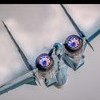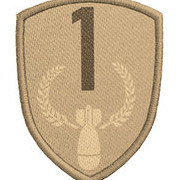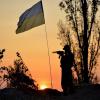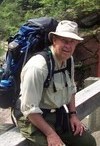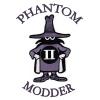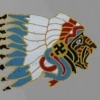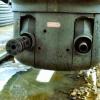Leaderboard
Popular Content
Showing most liked content on 09/22/2023 in all areas
-
12 points
-
11 points
-
3 points
-
2 points
-
2 points
-
2 points
-
1 point
-
1 point
-
1 pointJournal of FCdr Douglas Bell-Gordon, RNAS Part 21 12 September 1917. Leffrinckoucke, France. " I maintained a height advantage over the two giant machines I had selected and planned to approach them from their starboard quarter." Day one back in France and I have finally summonsed up the energy to bring my journal up to date. It has been a splendid summer. Some of the energy and joy of life has returned and I am even looking forward to my first patrols over the lines. Following my brief hospital stay in June, I returned to Dover and immersed myself in the organisation of my little unit. Munro had done a brilliant job in my absence and the general standard of cleanliness and organisation had continued to improve. We still had only two Camels, although our overall effectiveness was improved when the ancient Bristols were replaced by Sopwith Pups. On 4 July, we received a telephone warning that enemy aircraft were heading for the coast north of the Thames. At the sheds, I gave the orders to get airborne as quickly as possible and to proceed individually on a course that would bring us over Manston and thence north to Harwich. We got all six serviceable machines on their way within five minutes. Thick clouds covered much of southeast England. I chose a gap a little off to the north-east and climbed through the cloud layer into brilliant sunlight. With the ground now out of sight, I changed course over what I can only assume to be Manston. Some time later the sky cleared enough for me to see Margate disappearing under my tail. The time over water seemed interminable. As I approached land on the northern side of the Thames Estuary, the clouds became heavier. I patrolled for a half hour between Southend and Felixstowe before Munro spotted me and joined up. When my petrol gauge told me it was nearly time to head home, I led the pair of us back below the cloud and into a driving drizzle. There was no sign of the Hun lower down and we returned to Dover. Three days later we abandoned our breakfast to fly in a rainstorm up to Southend. Returned after more than two hours wet and hungry without seeing a thing once again. On 22 July 1917, we again chased rumours of Gothas, this time up to Margate. A beautiful morning – the lanes and fields and corpses of Kent spread out beneath us in a tapestry of green and yellow that spoke of everything English. Smoke curled from the occasional chimney above thatched cottage roofs. White dots were scattered about fields where sheep grazed. In the river valleys, wisps of fog hung beneath the crowns of oak trees. I found myself humming “Hearts of Oak” as I climbed to 10,000 feet. We spotted the Huns making landfall over Sandwich Bay. There were perhaps sixteen Gothas in a long gaggle of twos and threes. They shone silver in the sunlight and were probably rather pretty. By this point, however, I was thoroughly upset at the idea that they could come here and drop bombs on this island paradise. I recall chuckling to myself that it was strange for me as a Canadian to be thinking of it as our island and smiling at the idea of my parents hearing this. Both were born in Scotland and would have been proud of my sentiment. After my experience in June when the rear gunner of the Gotha nearly did me in, I resolved to approach these Huns differently. I maintained a height advantage over the two giant machines I had selected and planned to approach them from their starboard quarter. At the right moment I banked and began a shallow dive, firing from 350 yards until I swooped beneath the nearest Gotha. But by the time I zoomed and turned back for a second pass they were well off. I chased them and narrowed the distance, this time firing from long range. The rear gunners of both Gothas converged their fire on me and forced me to break off the attack. Now the Huns dropped their bombs randomly. Many fell over water. Then they turned east and ran for Belgium. I noticed one of the giant bombers fall out of formation and tumble downwards. To my joy, I saw Munro returning from that direction. His was our first victory over these intruders. At the end of July, I was granted a few days’ leave and took the train north to Glasgow to visit my Uncle Bill and Auntie Tilda. Uncle Bill is my father’s younger brother. Like Pop, he is a policeman. Glasgow was far more industrialised than I expected, or at least it seemed that way because of the way that years of soot had stained every building. Bill and Tilda live in Whiteinch, a pleasant part of the city with some lovely green spaces, although I suspect even the leaves of the trees were a shade darker than they should have been. Bill called it a “hard toun” in his broad Scots dialect. The people of Glasgow were friendly and funny, yet even their humour had a hard edge. Uncle Bill related the story of being on patrol when an electric bell sounded. Three young hoodlums had thrown a brick through a shop window and made off with some jewellery. Bill blew his whistle and gave chase. As the louts reached the next street they ran past a one-legged man with a crutch coming the other way. “Only in Glesga,” Bill said while giggling uncontrollably, “wid the buggers pause in their flight tae kick the crutch frae under a cripple!” I arrived back at Dover on 9 August to find a familiar face. Gerry Hervey had been drafted from Naval 8 to join our little crew. We had a jolly reunion and I was delighted to welcome my fellow Canadian to the flight. Even more interesting, Gerry was able to bring me up to date with events after my departure from France. It seems that the Evening News thought it best to check with the authorities before printing Huntington’s fantastic account of scrapping with the Red Baron. This resulted in his being “invited” to a meeting at Fleet HQ in Dunkirk. The story that made it back to the squadron was that Huntington was given his own command and would not be returning to Naval 8. His exploits with von Richthofen never did appear in the paper. According to Hervey, Huntington is now a course commander at White City, the training centre in west London where RNAS probationary sublieutenants are taught drill, which fork to use, and Traditions of the Service. He’s the man for the job, I’m sure. We launched the entire flight on the morning of 12 August. There were reports of Gothas heading toward the Thames and so we were to patrol from Southend nearly as far as Harwich. Munro and I led the way in our Camels, while Hervey led the others trailing behind in their Pups. Arriving at 12,000 feet south of Clacton, Munro and I immediately spotted fifteen or twenty of the large bombers inbound from the open water. I picked a group of three Huns and signalled that I would take the closest. We approached from their starboard beam, firing long bursts and diving away out of range before zooming to attack from the opposite beam. My rounds splashed along the wings and around the starboard engine. As I turned, the Gotha began to trail a thin stream of smoke or vapour and fell out of formation. This was no time for caution. I chased after it, ignoring the tracer from the bomber’s rear gunner. Another long burst sent the Hun tumbling out of control. Two flailing bodies detached themselves from the following machine. Only the pilot stayed with the aircraft all the way down until it crashed into the water about four miles southwest of Clacton. I saw another Gotha turning eastward and gave chase. Several long bursts exhausted my ammunition. Although the Hun lost altitude, it did not fall – at least I could not say so with certainty. We had ten days of quiet until 22 August. On that day we intercepted another large group of German machines as they crossed the coast near Manston. This time they turned back as soon as we engaged. I fired it one of the fleeing Gothas which seemed to lose control but I lost it in clouds below. The enemy machine was not seen to crash and was considered only to have been driven off. Most distressingly, however, I learned on landing that Munro had put down at Manston with a serious wound to his thigh. They took him to the Royal Seabathing Hospital in Margate. I borrowed a car to go there that evening. By the time I arrived, Munro was dead from his wound. For the rest of the month, the Germans left us alone. Two more Camels arrived and we focused on getting everyone in the flight some time on these difficult machines. The Camel demands full right rudder during the takeoff roll. Pilots who did not take this instruction seriously would find themselves swerving off-line dramatically and could easily dip a wingtip onto the field. Next, pilots need to avoid right-hand turns on takeoff. Those who ignore this caution frequently induce a tight spin close to the ground. In left-hand turns the Camel wants to point its nose up and without firm left rudder will stall. Finally, the machine is slightly tail-heavy. Constant forward pressure on the stick is needed to fly level. Low flying takes practice. On 11 September 1917, everything changed. I was called to Wing and given orders to report to Number 9 (N) Squadron, currently based at Leffrinckoucke, a field on the eastern edge of Dunkirk. There I was told to report to Squadron Commander Vernon as a Flight Commander – a substantive one as opposed to “acting”! The following day – this morning – I sailed from Folkestone to Dunkirk aboard HMS Greyhound. This little destroyer was showing its age as it was quite overcome by the stiff wind and moderate seas. I joined several other flying officers as guests of the captain on the bridge of the ship. After only fifteen minutes of clutching the binnacle as we heaved and tossed, I decided to leave their company and the captain’s pipe smoke behind and head aft to check on the stern rails and stare at the horizon for a good while. It was a blessing finally to disembark and get safely back to the war. Leffrinckoucke is not much of an aerodrome. The field is featureless except for several Armstrong huts (a pilots’ room, a cramped mess for the lower deck, and an office) and two long rows of Bessonneaux. I was surprised to see a group of several dozen Chinese labourers preparing a site for accommodations huts. The pilots and most of the chiefs and petty officers are currently billeted nearby, while the ratings are mainly under canvas. Squadron Commander Vernon welcomed me generously and walked me about the place. He explained that he had been here less than two months. The squadron had been somewhat written off by General Trenchard, GOC of the Flying Corps – not aggressive enough and with a poor record for equipment maintenance and reliability. We share the aerodrome with 54 Squadron RFC. They are a Sopwith Pup group and have a good reputation. There is a dinner at a hotel nearby tonight and we will be together with them. I had a chance this afternoon to have tea with the Boucher family in whose house I am billeted along with two other officers, Flight Commander Joe Fall from the Yukon and Flight Sublieutenant Roy Brown from near Ottawa. I’m told about half of the squadron is Canadian. Over tea and biscuits with them and the elderly Monsieur et Madame Boucher, we discussed the need for a heavily Canadian squadron to set a better example. More to follow…
-
1 pointDear friends, Update 5.106 has been released! It brings three new aircraft, many improvements to the career mode and several historical campaigns, and other changes. In addition, two of the campaigns that were previously only available on our website are now available on Steam. The three new planes are the armed sibling of the C-47, the Lisunov Li-2 Collector Plane, and two new additions to Flying Circus Vol.III Early Access - the German Albatros D.II and the French Nieuport 17 fighter. The Lisunov Li-2 was a Soviet version of the DC-3 built under license. Although it looked similar, it was quite different from the original because it was adapted for Soviet production - all measurements were converted to metric, it had different instruments, cargo doors, landing gear, even the engines. This Soviet C-47 sibling was like a gunship wannabe - in addition to being able to carry bombs, it had turrets AND a forward-firing machine gun. Normally, going the "jack of all trades" route means sacrificing something in each trade, but the USSR needed versatile aircraft. While the Western Allies had plenty of long-range fighters to cover their bombers and unarmed transports during the war and enjoyed air superiority most of the time, the Soviet VVS usually did not have that luxury. The D.II was the first in the pantheon of legendary Albatros fighters. It became the symbol and icon of the fighter plane in the Great War. The rapid mass production of Albatros fighters allowed Germany to maintain air superiority until April 1917. "Bloody April" has become synonymous with the heavy losses of British aircraft in 1917. Its pilots noted the good power of its twin machine guns, good forward and upward visibility, responsive handling, high speed, and impressive rate of climb. The fighter took part in battles all along the Western Front. The Nieuport 17 was intended to be a further development of the Nieuport 11 fighter. Compared to its predecessor, it had a larger wingspan and surface area, a more powerful engine, a Vickers machine gun, and metal aileron control wires. The plane was initially built in several French factories, but licenses were soon purchased by other countries: Great Britain, Russia, Italy, Finland and Japan. Pilots noted its good climb rate and visibility, as well as its excellent maneuverability. The plane's powerful engine and high dive speed exposed the main drawback of the "one and a half wing" design - a weak lower wing due to only one spar. There are two known occasions when pilots made successful landings after losing their lower wings. As you can see from the change list below, there are many improvements to Career Mode that we hope you like. More are on the way! If you prefer to make your purchases on Steam, there are a lot of new things that are being released there today at the same time as the update. Two campaigns that were previously only available on our website have been updated and released there: Ten Days of Autumn and Hell Hawks Over the Bulge. In addition, several new bundles have been released - Steam Bundles allow you to purchase multiple aircraft and campaigns, along with the corresponding modules, at a discounted price. While they are mostly aimed at new players to make it clearer which aircraft or campaign belongs to which module (for example, they all include the Battle of Stalingrad for newcomers), they can also be beneficial for seasoned players - the content you already own on Steam is excluded from the total price, so it may be cheaper to buy a bundle even if you own all but one of its contents. We hope you enjoy the new update and that it will enrich your gaming experience! See you in the skies! Update 5.106 Changelist Soviet Li-2 Collector Plane capable of carrying cargo, paratroopers, bombs, defensive and forward-firing armament, has been released; Albatros D.2 airplane is available in Early Access for all owners of "Flying Circus Vol. III"; Nieuport 17 airplane is available in Early Access for all owners of "Flying Circus Vol. III"; Ten Days of Autumn campaign is updated and is now available on Steam as well (tactical numbers and correct camo, the aircraft quantity in the air is increased by one third, the number of convoys and artillery batteries is doubled, numerous edits to briefings, illustrations redesigned, all missions finalized and retested); Hell Hawks Over the Bulge campaign is updated and is now available on Steam as well (script triggers, aircraft tactical numbers, generic and unique paint schemes for three participating squadrons, faster mission loading); Sky Nomads campaign is updated (slightly reduced the difficulty of the 10th mission and changed the briefing of the 15th mission); Normandy and Rheinland Career mode: new mission type - Intruder; Moscow, Stalingrad, Kuban Career mode: added Artillery Spotting missions for USSR (IL-2 and U-2) and Germany (Bf 109 E, Ju-87); Rheinland Career: added photo reconnaissance missions on Spitfire XIVe; Career: updated free hunt missions, added patrol area marks the map and updated mission score logic; Career: enemy night fighters can be encountered near the front line during night combat patrol missions; Career: fighter cover has been added, enemy free hunters removed from transport missions in all career timeframes; Career: trains appear in combat reconnaissance missions correctly; Stalingrad Career mode: Ju 52 transport mission have fighter escort; Rheinland Career mode: in the transport escort missions during the Market Garden and Varsity operations the transport aircraft have mixed loadouts; Western Front WWI Career: BoSta 13 during the first phase (1917) and SchuSta 27b after 29.09.1917 careers progress correctly; Western Front WWI careers: potential career progression issues to Phase 2 corrected for French Escadrille SPA 26, British squadrons No.1, No.2 AFC, No.11, No.18, No.19, No.20, No.23, No.43, No.46, No.48, No.56, and No.79, and German Jasta Boelcke, Jasta 4, 6, 7, 8, 11, 14, 35b, and 40s. Kuban Career mode: fixed German ground attack aircraft not having bombs in escort missions; Career mode: corrected taxiing at Tangmere airfield in Normandy and Bolshaya Rossoshka near Stalingrad (previously the lead aircraft could crash into another planes on the runway); Normandy Career mode for USA and UK: in all escort missions the escort flight comes from the UK side; ShVAK gun internal firing sounds updated; Fuel gauge switch control has been implemented on Ju-88, Bf 110, Me 410, Fw 190D9, A-20, C-47, Li-2, Hurricane and Typhoon aircraft. The switch no longer activates "automatically" from time to time, there is a new command for this (RShift + I by default); Spitfire Mk.V, Spitfire Mk.IX, and P-38 aircraft have the fuel gauge button control implemented (P-38 has a remaining fuel reserve control button). The button is no longer pressed "automatically" from time to time, you have to press and hold the button to operate the fuel gauge (RShift + I by default); Ground spotters correctly give targeting info to AI pilots; Fixed a problem with AI pilots climbing as a flight while carrying a heavy bomb load; Corrected airframe strength of Nieuport 11 and Halberstadt D.II (slightly increased) and Siemens-Schuckert D.IV (slightly decreased); Nieuport 11: RPM indicator now gives correct readings; Nieuport 11: corrected engine thermal model, overcooling tendency is decreased; Nieuport 11, Halberstadt D.II: corrected visual flight stick position and fuel gauge bulb in the cockpit; Hs 129: corrected typos and errors in cockpit textures (Oyster_KAI); Halberstadt D.II and Mosquito F.B. Mk.VI series.2 are visible at long distances (more than 10 km) correctly; Ju 88A-4: lower gunner uniform matches the time of year and timeframe.
-
1 pointSpecial recognition and gratitude for their support: Wrench Logan4 trotski00 Gepard Hans Topp MigBuster GKABS Menrva Shootingstar2 Christopher Docherty Muesli Jimbib Logan4 Gunrunner Mue Mayollid Wizard43 EricJ Octavia038 snapper 21 busdriver crisisloaner ZealousFoX mk145 Lovi0715 Impulse8792 Karl_Vance trotski00 Viggen Major Blooknok ludo.m54 Badinoff
-
1 pointgot one Mirage F1. but lost both Foxbats before mission end.......
-
1 point
-
1 point
-
1 point
-
1 point
-
1 pointthe new F-4E model is coming hopefully before the year ends , F-4E up to F-4E_78 are done including the respective cockpits always good to look at the pictures , just notice a small problem on the walkway outline on the front / air intake ( is fixed already )
-
1 point
-
1 pointa little reminder that the RFs wer cleared to carry one type of bomb wait for the flash and smile
-
1 point
-
1 point
Important Information
By using this site, you agree to our Terms of Use, Privacy Policy, and We have placed cookies on your device to help make this website better. You can adjust your cookie settings, otherwise we'll assume you're okay to continue..


